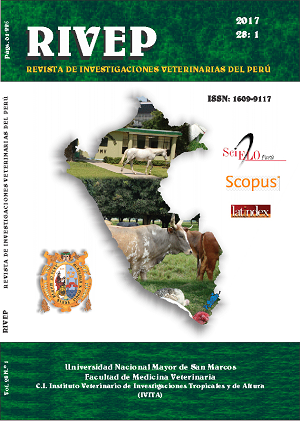Occurrence of enteric parasites in populations of Quiscalus lugubris (Aves: Passeriformes, Icteridae) of urban semiarid of Falcon state, Venezuela
DOI:
https://doi.org/10.15381/rivep.v28i1.12941Keywords:
Quiscalus lugubris, intestinal parasites, occurrence, VenezuelaAbstract
Intestinal parasites in passerine birds can potentially have zoonotic importance. A study was conducted to determine the occurrence of intestinal parasites in feces of Carib Grackle, Quiscalus lugubris, populations (Aves, Passeriformes: Icteridae), in the city of Coro, Falcon State, Venezuela. Parasitological examination of the samples (n=156) was conducted by applying the direct smear, Willis-Molloy (NaCl) and Faust (zinc sulphate) flotation methods, spontaneous sedimentation in tube technique and Kinyoun staining. One or up to three intestinal protozoa, helminths and acanthocephalan taxa were detected in 109 (69.9%) fecal samples. Isospora spp (59.0%), Criptosporidium spp (37.8%) and the spiny-headed worm Mediorhynchus spp (6.4%) were the most frequent enteric parasites. All of the detected parasites are new records for Q. lugubris in Venezuela.Downloads
Downloads
Published
Issue
Section
License
Copyright (c) 2017 Dalmiro Cazorla Perfetti, Pedro Morales Moreno

This work is licensed under a Creative Commons Attribution-NonCommercial-ShareAlike 4.0 International License.
AUTHORS RETAIN THEIR RIGHTS:
a. Authors retain their trade mark rights and patent, and also on any process or procedure described in the article.
b. Authors retain their right to share, copy, distribute, perform and publicly communicate their article (eg, to place their article in an institutional repository or publish it in a book), with an acknowledgment of its initial publication in the Revista de Investigaciones Veterinarias del Perú (RIVEP).
c. Authors retain theirs right to make a subsequent publication of their work, to use the article or any part thereof (eg a compilation of his papers, lecture notes, thesis, or a book), always indicating the source of publication (the originator of the work, journal, volume, number and date).










